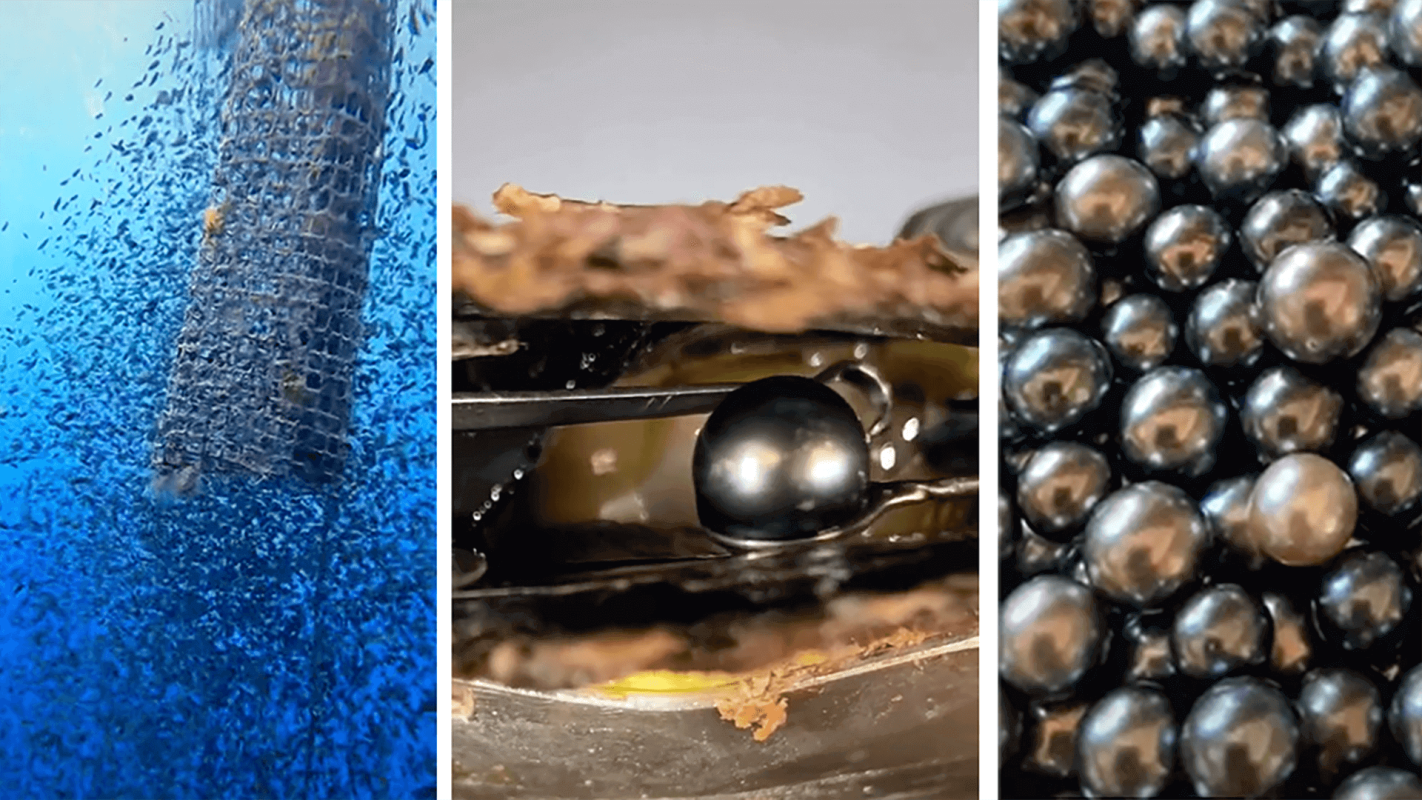A Tahitian pearl brand has captured the attention of social media with footage of its innovative farming methods. Kamoka Pearl (@kamokapearl), a sustainable pearl brand with more than 1 million followers on TikTok, has built a sizable audience around its videos showcasing its gentle pearl harvesting technique.
Kamoka's farm, located in the Ahe Atoll, 300 miles northeast of Tahiti, has pioneered sustainable pearl harvesting techniques that not only improve the quality of harvested pearls, but also help to repopulate the local fish population.
Oysters at traditional pearl farms are grown high above the floor of a lagoon to provide them with oxygen and plankton. Many marine organisms, such as barnacles, latch onto these suspended oysters, which can prevent healthy growth if not routinely cleaned off every couple of weeks. To clean the oysters, it is common practice to remove them from the water and blast them with high-pressure hoses. This violent practice can disturb the local ecosystem and promote the spread of disease, according to Kamoka.
Kamoka has created a symbiotic relationship between its oysters and the native fish populations instead. At the farm, team members hang oysters in shallow zones of the lagoon near a reef, where the oysters can be cleaned naturally by the gentle nibbling of native fish.
Because fishing is prohibited in this area, Kamoka has effectively created a reserve where the lagoon's fish populations can safely reproduce.
And because Kamoka's harvesting techniques are gentle, the live oysters can be safely put back into the ocean after the pearls have been removed, which continues the conservation of local reefs and provides food and shelter to native fish.
While it is commonly thought that pearls begin with a grain of sand that irritates an oyster to produce layers and layers of beautiful nacre — or mother of pearl — to coat the irritant, all farm-grown pearls actually begin with a nucleus that's implanted inside of the oyster by hand. (Sand is actually too small of an irritant to cause an oyster to form a natural pearl, but that's a story for another day.)
Kamoka Pearl typically uses a nucleus made from the shells of the oysters it cultivates, rather than a nucleus from North American freshwater mussels, the most commonly used nuclei in pearl farming. This means that Kamoka avoids contributing to the decline of that species.
Kamoka claims to be the first company in Polynesia to use this type of nuclei, and says that the Tahitian Pearl Farming Board even found that Kamoka's nuclei produced three times more A-grade pearls than any other nucleus type.
And Kamoka's sustainability efforts don't end at the water's surface. All of the farm's electricity is supplied by solar and wind power, while the farm's fresh water comes from collecting and storing rainwater.
Talk about respectful neighbors. And local fish, for one, seem to be loving the company.








